Sun (Reference)
Temperature – 5,500 oC (At Surface), 15 million oC(in the Core) Age – 4.6 billion years old Radius – 795,508 Kilometers (109 times that of earth) Mass – 1.9 x 1030 Kg / 330,000 times that of Earth Gravity – 274 m/s2 / 28 times that of Earth Distance from Earth – 150,000,000 km (1 Astronomical unit)
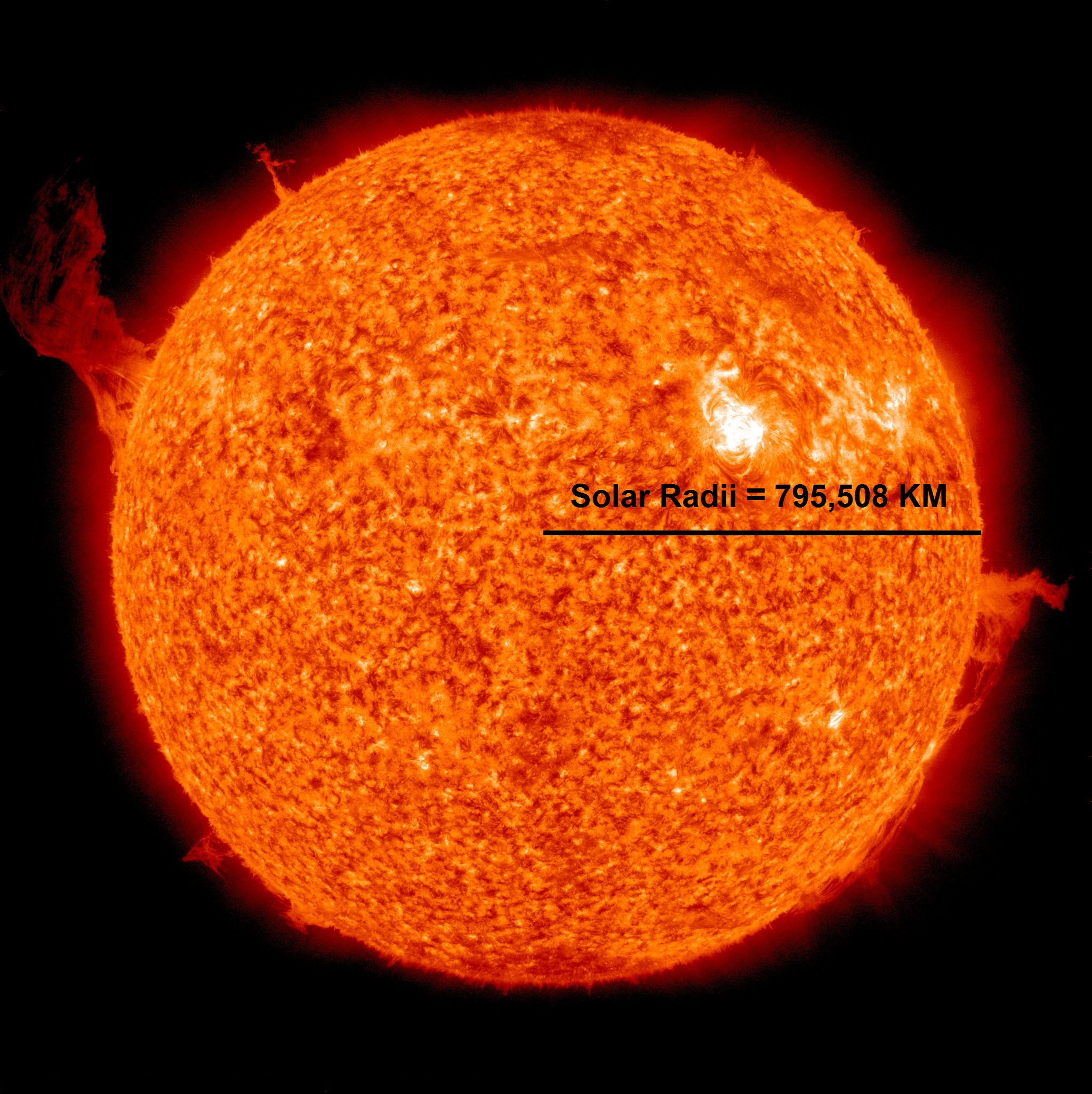
The Sun (Solar)
11) Sirius B (The Dog Star)
Age – Approx 240 million years old and It can be seen from everywhere on the earth’s surface. Temperature – 10,000 oC (Almost twice as hot as the Sun) Radius – 1.197 Million Km / 1.71 x Solar Radii (Radius of Our Sun) Distance from Earth – 8.6 Light years Mass – 3.9 x 1030 Kg / 2 x Solar Mass(Mass of Our Sun) Gravity – 213.8 m/s2 Luminosity – 25 x Solar Luminosity(Our Sun’s Luminosity)
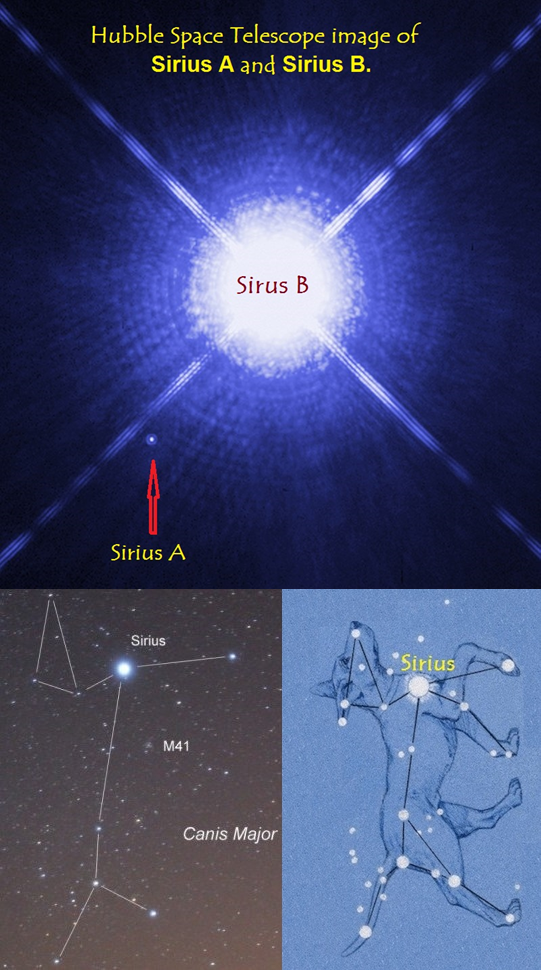
Sirius (The Dog Star)
10) Pollux Star
Age – 724 Million Year old Temperature – 4,500 oC Radius – 6.122 Million Km / 9 x Solar Radii Distance From Earth – 34 Light years Mass – 4.05 x 1030 Kg / 1.91 x Solar Mass Gravity – 4.842 m/s2 Luminosity – 43 x Solar Luminosity
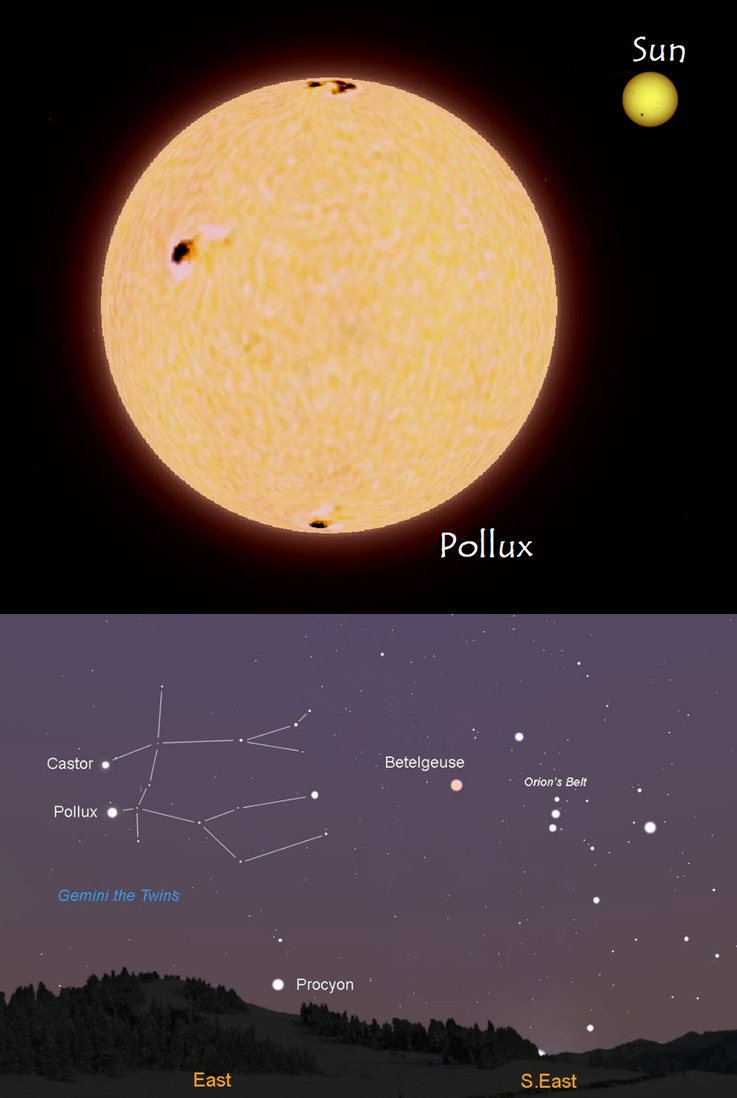
Pollux Star
9) Arcturus Star
Age – 7.1 Billion Years old Temperature – 4000 oC Radius – 17.87 Million Km / 25 x Solar Radii Distance from Earth – 36.7 Light years Mass – 2.1 x 1030 Kg / 1.10 x Solar Mass Gravity – 0.4571 m/s2 Luminosity – 170 x Solar Luminosity
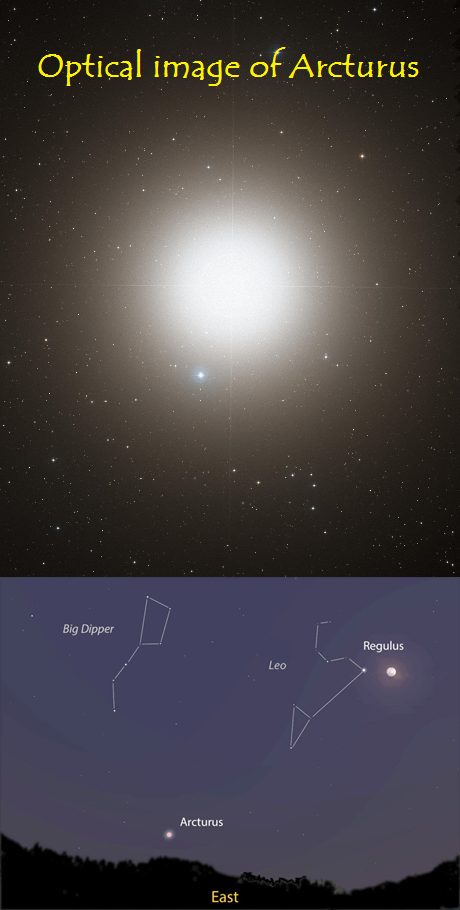
Arcturus Star
8)Aldebaran Star (Eye of Taurus)
Age – 6.6 Billion Years Temperature – 3680 oC Radius – 30.75 Million Km / 44 x Solar Radii Distance from Earth – 65 Light Years Mass – 3.3 x 1030 Kg / 1.7 x Solar Mass Gravity – 0.389 m/s2 Luminosity – 518 X Solar Luminosity

Aldebaran Star “Eye of Taurus”
7) Polaris (The North Star / Dhruv Tara)
Age – 70 Million Years Temperature – 5730 oC Radius – 35 Million Km / 49 x Solar Radii Distance from Earth – 434 Light Years Mass – 5.4 x Solar Mass Luminosity – 2500 x Solar Luminosity
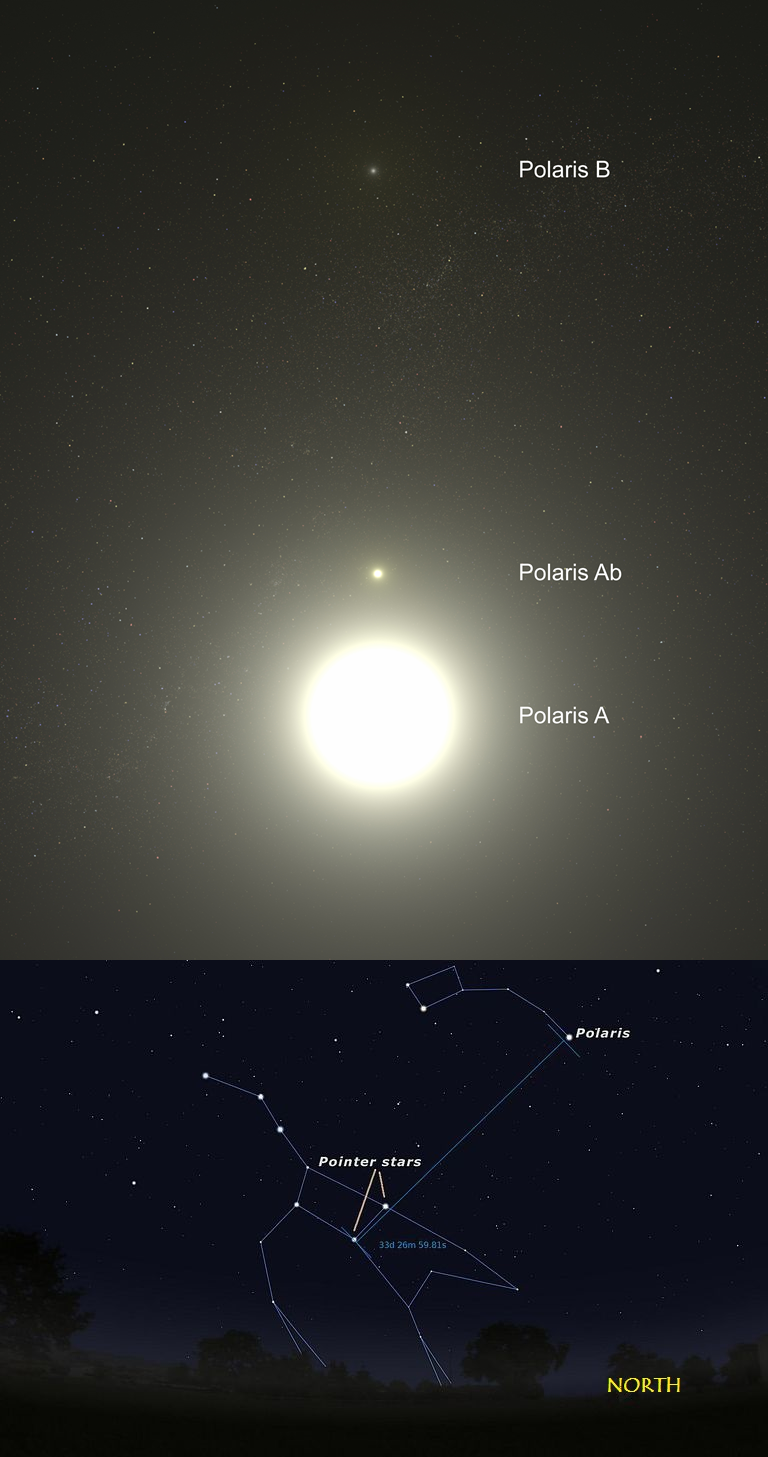
Polaris Star “The North Star”
6) Rigel Star (The Foot of Orion)
Age – 8 Million Years Temperature – 10,727 oC Radius – 54,250,000 Km / 78 x Solar radii Distance from Earth – 860 Light Years Mass – 3.5 x 1031 Kg / 18 x Solar Mass Luminosity – 12000 x Solar luminosity
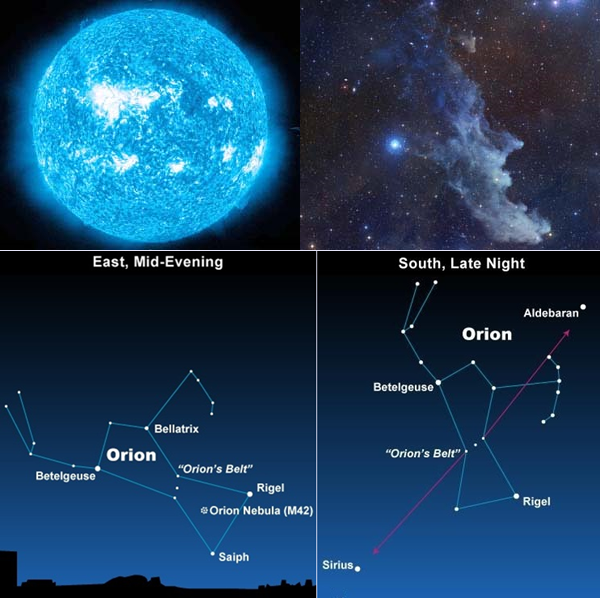
Rigel star “Foot of Orion”
5) Antares Star (Heart of the Scorpion )
Age – 11 Million Years Temperature – 3,250 oC Radius – 883 x Solar Radii Distance from Earth – 619 Light Years Mass – 12 x Solar Mass Luminosity – 97,500 x Solar Luminosity
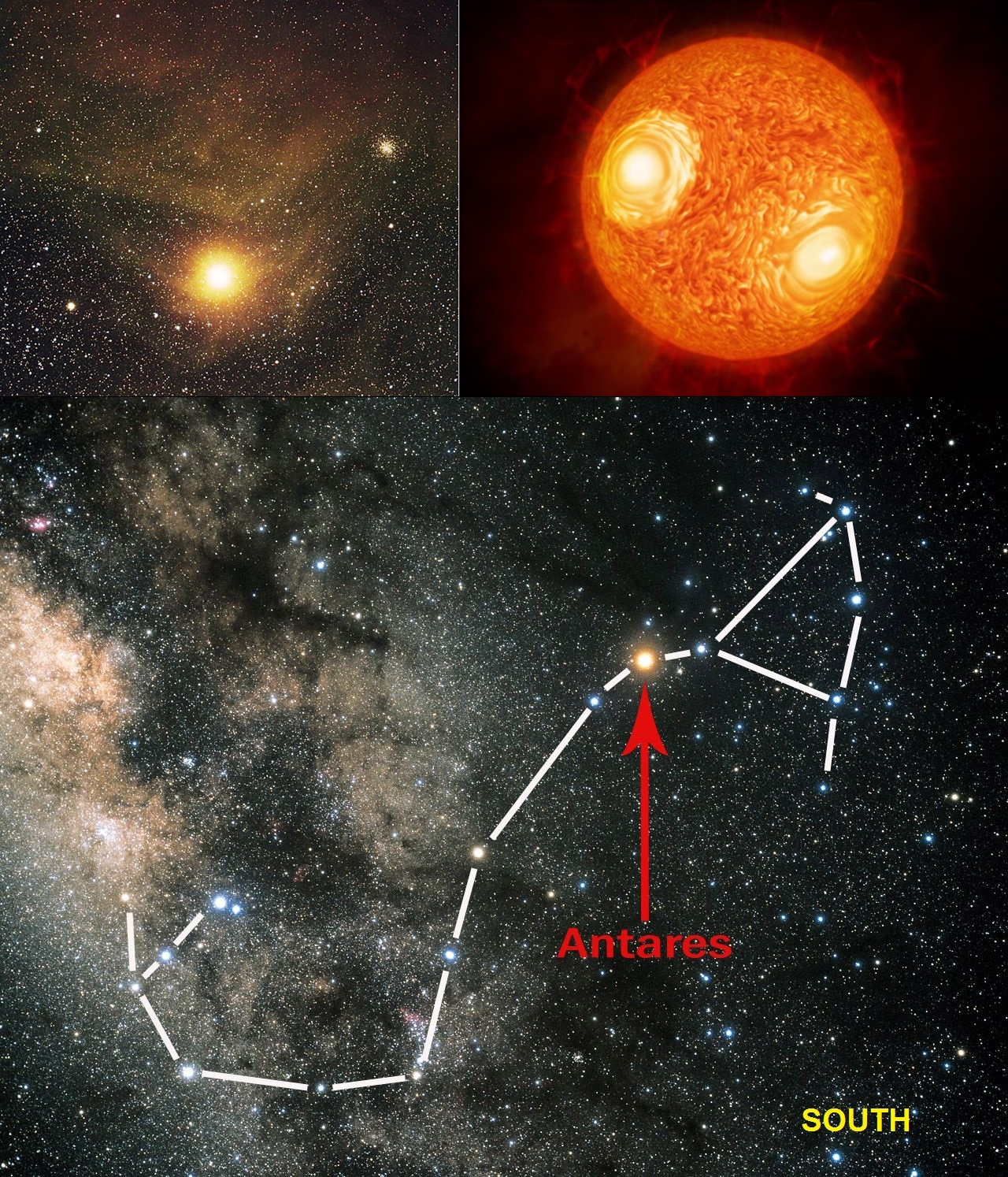
Antares star “Heart of The Scorpion”
4) Betelgeuse Star
Age – 10 Millions Years Temperature – 3,230 oC Radius – 820 Million Km / 1,180 x Solar Radii Distance from Earth – 640 Light Years Mass – 20 x Solar Mass Luminosity – 140,000 x Solar Luminosity
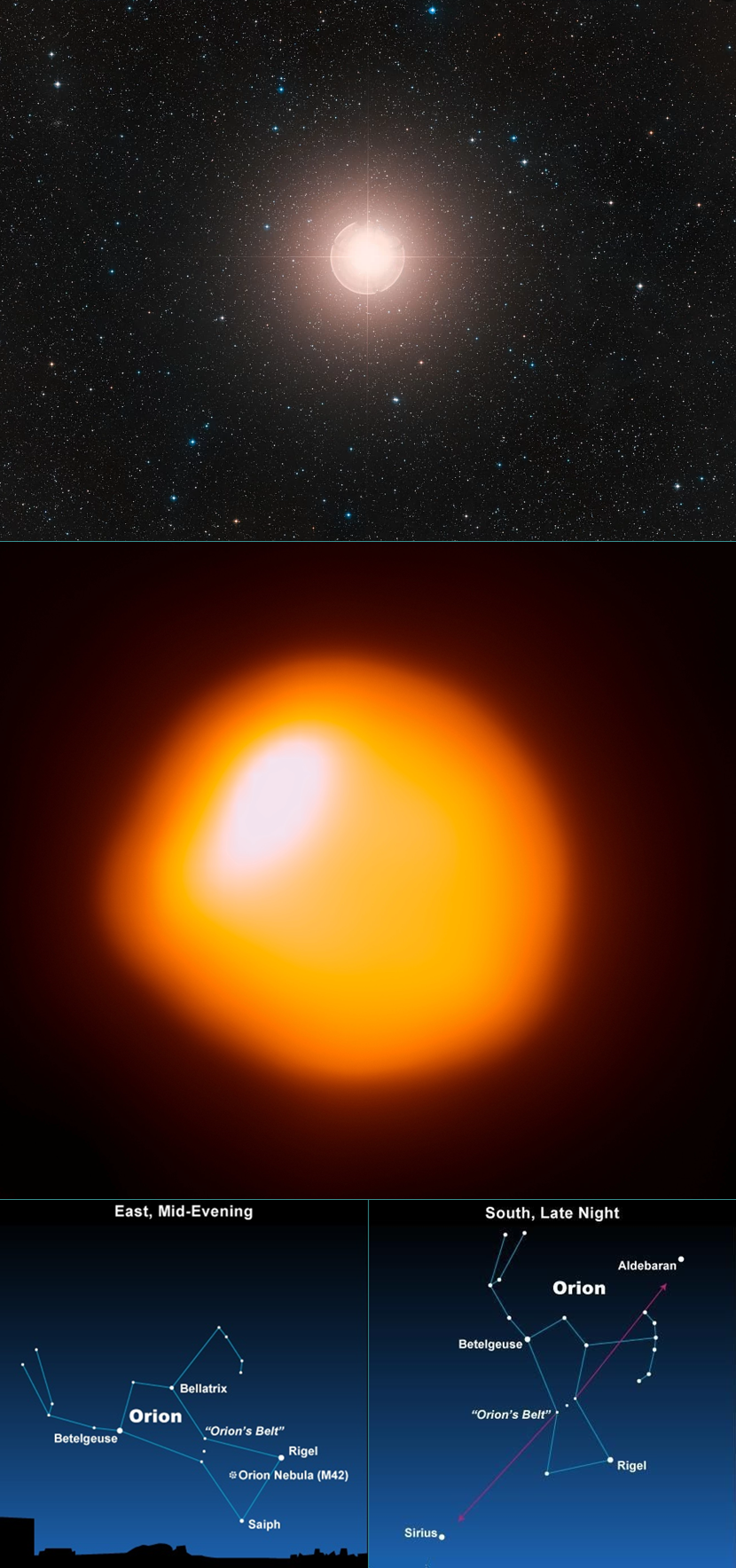
Betelgeuse Star
3) VV Cephei
Age – 25 Million Years Temperature – 3,330 oC Radius – 988 Million Km / 1400 x Solar Radii Distance from Earth – 4,900 Light Years Mass – 3.8 x 1031 Kg / 19 x Solar Mass Luminosity – 200,000 x Solar Luminosity
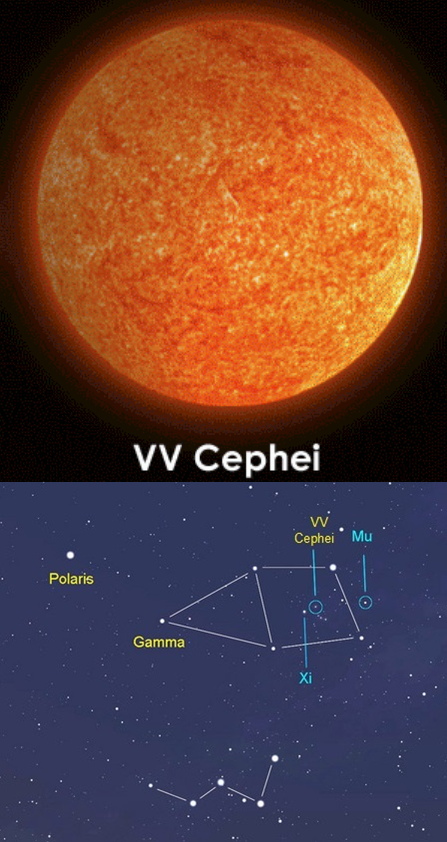
V V Cephei
2) VY Canis Majoris
Age – 4,900 Million Years Temperature – 3,220 oC Radius – 987 Million Km / 1420 x Solar Radii Distance from Earth – 4000 Light Years Mass – 3.3 x 1031Kg / 17 x Solar Mass Gravity – 0.0025 m/s2 Luminosity – 270,000 x Solar Luminosity
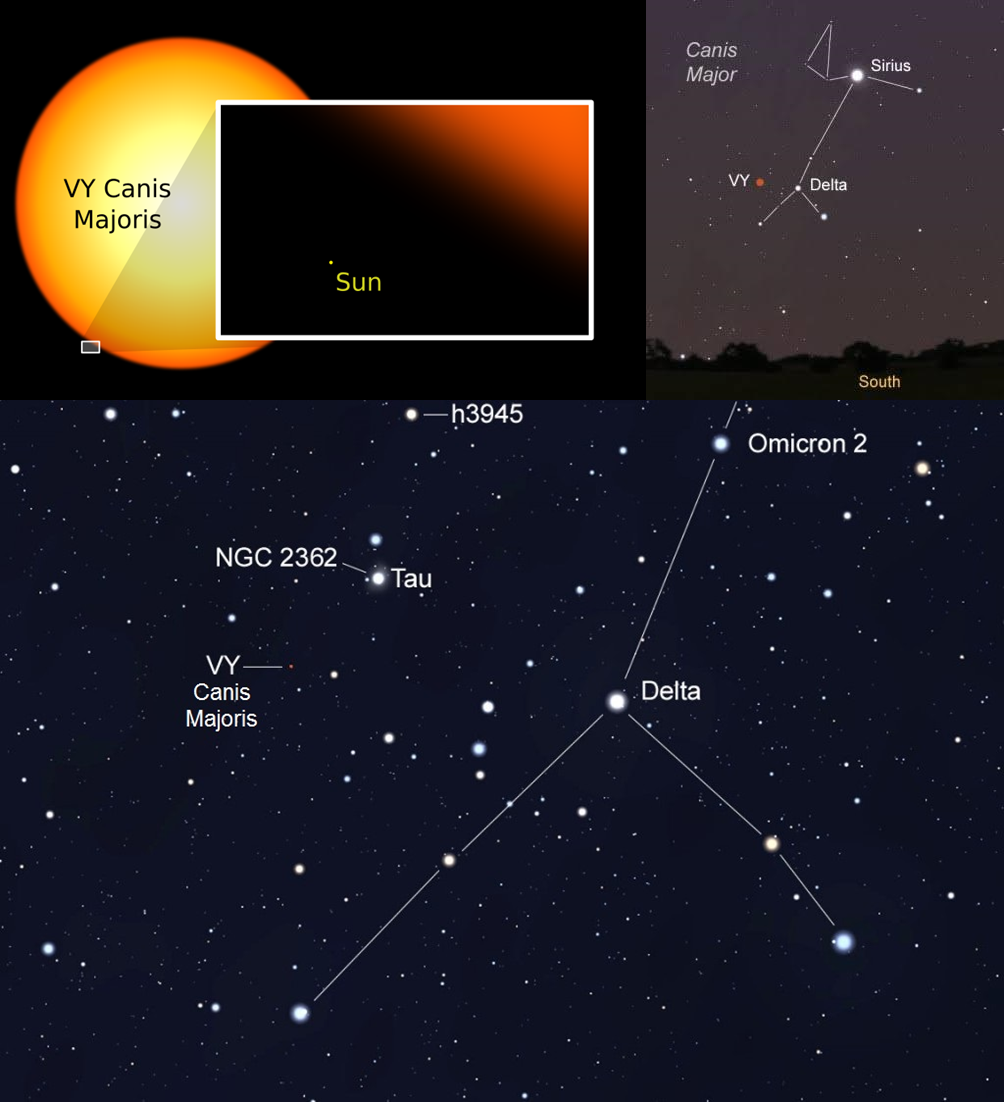
VY Canis Majoris
1) UY Scuti
Age – Not calculated Temperature – 3,400 oC Radius – 1188 Million Km / 1708 x Solar Radii Distance from Earth – 9,500 Light Years Mass – 8 x Solar Mass Luminosity – 340,000 x Solar Luminosity
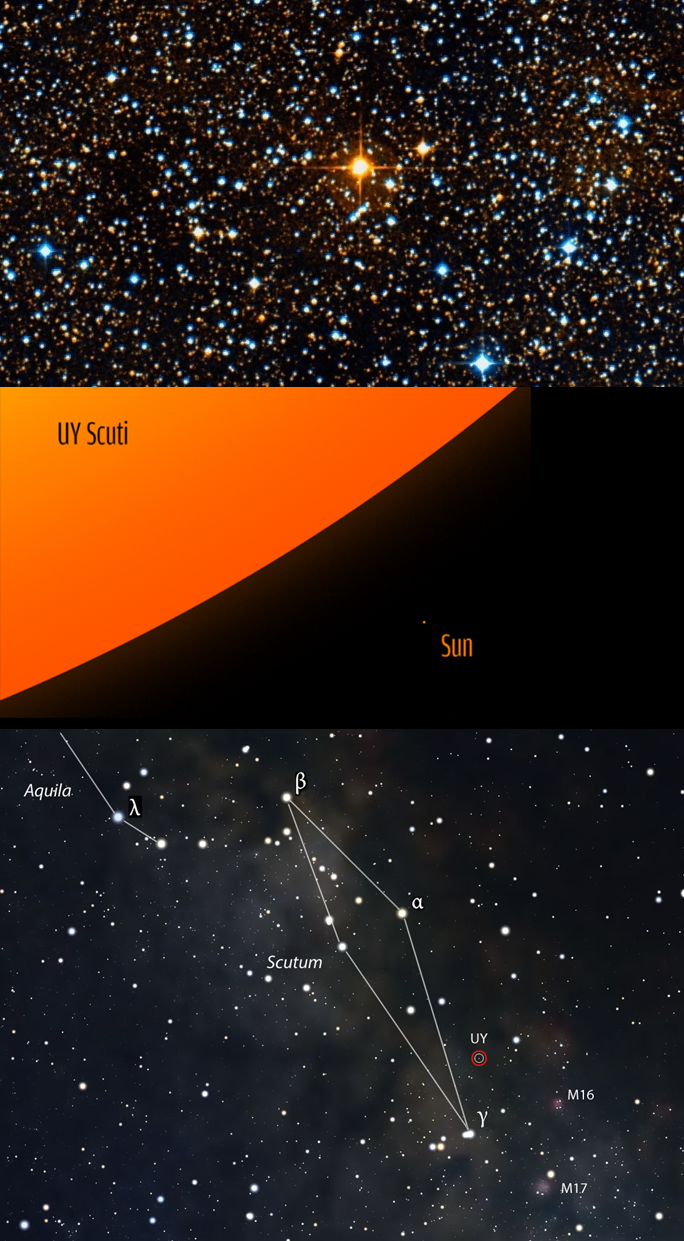
UY Scuti “The Biggest Monster of Our Milkyway Galaxy” First Image (above) From Rutherford Observatory





